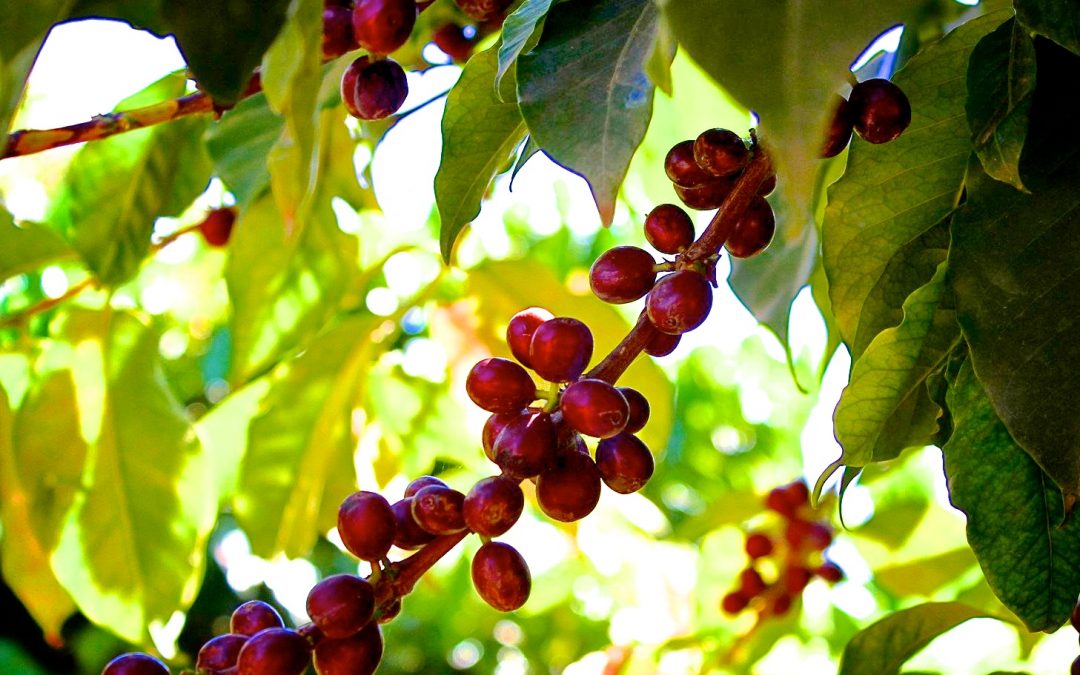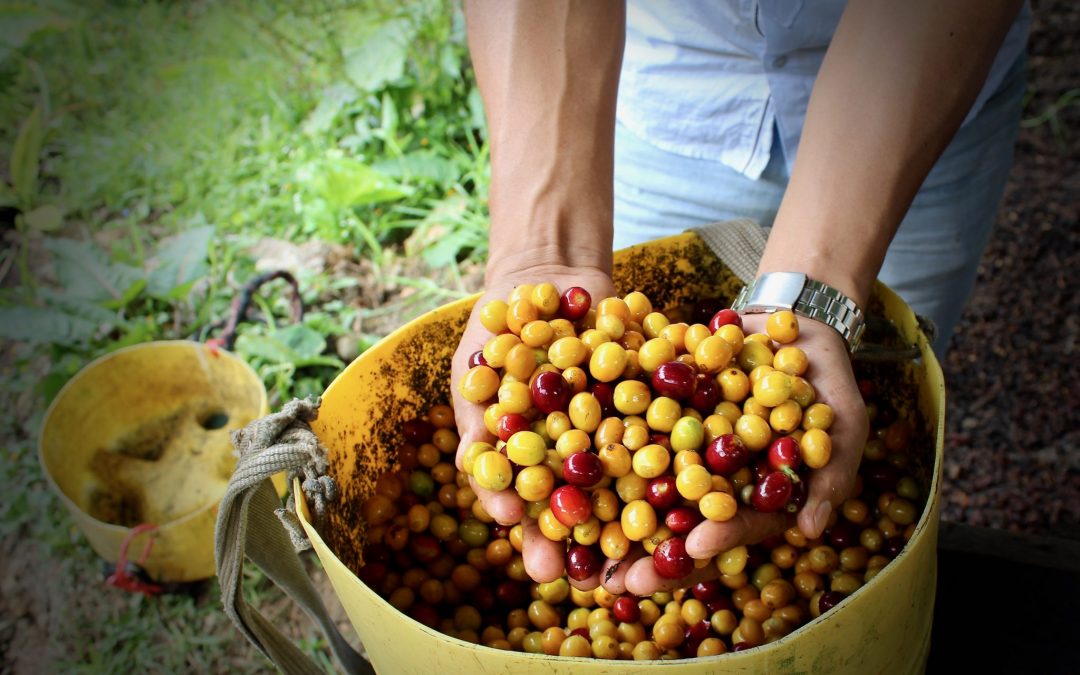Ethiopian coffee - the original source
Ethiopia is renowned as the birthplace of Arabica coffee; if you’re reading this there’s a good chance you’re already familiar with the story of a certain Ethiopian herdsman and his dancing goats …
The legend goes that before coffee was first cultivated by the Arabs in Yemen, the secret of the Arabica coffee bean was discovered around 750 AD by a goat-herder named Kaldi. The herdsman noticed his livestock nibbling on the bright red berries of a certain bush, seeing the goats become more energetic he then chewed on the fruit himself. As the story unfolds we learn how the beans were then roasted by accident, leading to the first cup of coffee being brewed. Research suggests that before beans were roasted over the fire in skillets and brewed with water, coffee was actually consumed as a foodstuff – ground raw and blended with animal fats.
Whatever the truth of the story is, Ethiopia’s near-legendary status in coffee circles is not just about being the “birthplace” of Arabica coffee, it is simply unlike every other place in the Coffee World. After the trees were discovered growing wild in forests they were cultivated for household use and then commercial sale. This means that unlike the majority of other coffee-growing countries, the plant was not introduced as a cash-crop through colonization; growing, processing, and drinking coffee is part of everyday life here, and has been for centuries. Because the drink has such a significant role in the daily lives of Ethiopians, domestic consumption is very high – about half of the country’s 6.5-million-bag annual production is consumed at home, with roughly 3.5 million bags being exported.

Coffee is still commonly enjoyed as part of a “ceremonial” preparation, a way of gathering family, friends, and associates around a table for conversation and community. The head of the household will roast the coffee in a pan and grind it fresh before mixing it with hot water in a brewing pot called a jebena. The strong liquid is then served in small cups, then fresh boiling water is added to brew the coffee two more times. The process takes about an hour from start to finish, and is a regular show of hospitality in Ethiopian society.
As you might expect from the home of the original coffee plant, Ethiopian coffees are renowned for their diverse and complex flavours – the diversity of the coffee here is unmatched. Around 90% of production comes from smallholders, much of this grows naturally in wild forests. This forest ecosystem accounts for around a third of all coffee production in Ethiopia. The diversity of coffee, soil and climate means that the harvested crop is de-facto organic.
There are several ways coffee is prepared for market in Ethiopia. There are large estates that are privately owned and operated by hired labour; here the coffee is often picked, processed, and milled on the property. At the other end of the spectrum, “garden coffee” is brought by a farmer in cherry form to the closest or most convenient washing station, where it is sold and blended with other farmers’ lots and processed according to the desires of the washing station. Co-op members will bring their cherry to be weighed and received at a co-op washing station, where there is more traceability to the producer level through the membership registers of the co-operative.
Processing methods and flavour profiles
Ethiopian coffee is either natural sun-dried (70%) or washed (30%).
Washed Ethiopian coffee can be incredibly bright, fruity and floral with moderate body and fantastic clarity. The delicate qualities of these coffees are sometimes described as tea-like.
Natural processed Ethiopian coffee is more syrupy, complex and can have an intense sweetness. These are the coffees that often change people’s perception of what coffee is supposed to taste like with their wild and sweet fruit flavours.
Find out more about processing methods here.

Commonly referred to as ‘Naturally Processed coffee’, the majority of Ethiopian coffee is processed this way.
Ethiopia has a large number of growing regions including Yirgacheffe, Sidamo, Harrar and Limu. Within Individual areas, like Sidamo (in the South), there are micro-regions. For example, within Sidamo we find Guji and the famous Yirgacheffe.
This year we have sourced Ethiopian coffees from three regions: Limu, Guji and Yirgacheffe.
From Limu, we have a delicious washed organic coffee from Haider Abamecha – you can find out more here.
After turning heads and delighting taste buds all summer the wonderful Guji Highland was one of this year’s highlights for us. This was a new relationship for us and our import partner and we’re very excited to see what this co-operative can offer in the years to come.
For those of you who are missing this coffee, the upside is that we now have room for another knock-out natural from Yirgacheffe – the Rocko Mountain Reserve. This coffee has been graded and selected on quality and represents the very best available in the area around Rocko Mountain. You can expect huge strawberry notes sitting alongside a beautiful acidity on a bed of sweet florals.
Find out more about our Rocko Mountain Reserve here.
Sourcing and exporting Ethiopian coffee

Ethiopian coffee has been traded on the Ethiopia Commodity Exchange (ECX) since 2008. The ECX was established to create an element of collective bargaining for farmers who are not members of co-operatives or owning large estates. Previously, only a third of all the agricultural products produced in Ethiopia reached the market due to the high costs and risks involved with trading. There was no assurance of product quality or quantity which meant buyers would only trade with suppliers they knew and trusted. This resulted in many of Ethiopia’s agricultural producers becoming isolated from the market, forcing them to sell their produce to the nearest buyer, sometimes a chain of multiple middlemen, leaving them unable to negotiate on price or improve their market position.
About 90% of Ethiopian coffee is produced by smallholder farmers who are working on average plot sizes of between 1 and 2 hectares. Besides coffee they will grow a range of subsistence crops. These smallholders typically deliver their freshly harvested cherries to a privately owned washing station in the evening. The washing station will pulp, wash and dry the coffee before delivering the dry parchment coffee to a warehouse at the ECX (Ethiopian Commodity Exchange). A washing station representative will then sell the parchment on the ECX trading floor in Addis Ababa to an exporter.
With the introduction of the ECX, coffee exports in Ethiopia have become more regulated and centralized, enabling more smallholder producers to have access to the global market.
Ninety per cent of all the coffee produced in Ethiopia now moves through the ECX where it is cupped and graded according to flavour profile and quality.
90% of Ethiopian coffee moves through the ECX, enabling more smallholder producers to have access to the global market.

Since its inception in 2008, the ECX claims to have introduced:
- Market integrity – by guaranteeing the product grade and quantity and operating a system of daily clearing and settling of contracts.
- Market efficiency – by operating a trading system where buyers and sellers can coordinate in a seamless way on the basis of standardized contracts.
- Market transparency – by disseminating market information in real time to all market players.
This system seems to have been successful in giving more smallholders access to the market, and can result in some really consistent stand-out lots with incredible flavour profiles. The downside for the specialty buyer is the inability to access information about the precise origins of the coffee, and thus an inability to purchase from the same producers year after year.
The other option for smallholder producers is to become members of a co-operative. These co-operatives have their own washing stations. The co-operatives do not have to deliver their coffee to the ECX, but they do have to be united in Co-operative Unions; the uniions are responsible for financing and exporting the coffee.
Farms that are larger than 30 hectares usually have their own washing station, these growers are allowed to export their coffee directly without going through the ECX.
After pressure from the specialty-coffee industry and several rounds of intense negotiation, a later iteration established that washing-station information was made available after the coffees were purchased, though certainly tracing them down to the individual producers would prove incredibly challenging.
In March 2017, the ECX voted to allow direct sales of coffee from individual washing stations, which will not only allow for increased traceability, but will also allow for repeat purchases and relationship building all along the chain—a change that increases the potential for higher prices to the farmers. It remains to be seen what the impact of improved traceability and increased direct sales will have on specialty coffees from Ethiopia, but the industry appears optimistic.





Leave a comment
This site is protected by hCaptcha and the hCaptcha Privacy Policy and Terms of Service apply.